Written by: You Yi
Posted on: September 18, 2014 | 
Shaoxing City, China
Shaoxing is a prefecture-level city in China’s northeastern Zhejiang province (Zhejiang Cuisine). Located on the south bank of the the Qiantang River estuary, it borders Ningbo to the east, Taizhou to the southeast, Jinhua to the southwest, and Hangzhou to the west. It is a City of Water, which boasts many honors and awards won at home and abroad.
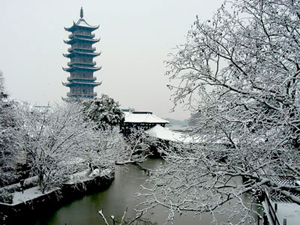 |
Da Shan Pagoda |
This land has a history of over 7000 years, having existed since the age of the Hemudu Culture (one of the major Neolithic cultures in the Yangtze River region). In 490 BC, the State of Yue built a town here and made it the capital of Yue. From then on, dozens of titles were given to it, such as the Hometown of the Greatest Cursive Calligrapher (Wang Xizhi), the First-class Rice Wine City in China, and so on.
Shaoxing City is embraced by plains in the North, and mountains and hills in the East and West. Therefore, it lies on a slope tilting downwards from the southwest to the northeast. Inside the city are four mountains, three basins, two rivers and one plain. They are the Kuaiji Mountain, the Siming Mountain, the Tiantai Mountain, the Longmen Mountain, the Zhuji Basin, the Xinsheng Basin, the Sanjie-Zhangzhen Basin, the Puyang River, the Cao’e River and the Shaoyu Plain.
As a major provincial capital city in China, Shaoxing found its name on the list of National Famous Historic and Cultural Cities of the first group. In addition to that, it has won such accolades as China Excellent Tourism City, China Human Habitat Environment Prize and Best City for Business in China, etc. In 2007, the city climbed from 41st to 33rd place on the list of China’s Top 100 Cities in Comprehensive Strength and was ranked 1st in the comprehensive assessment of the city environmental management in Zhejiang Province.
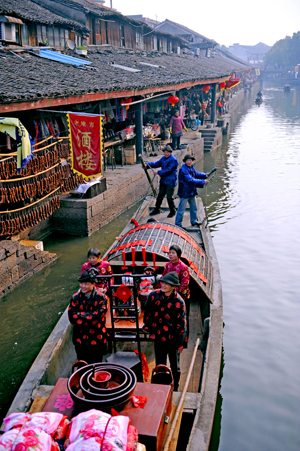 |
Wupeng (black awning) boat |
As an ancient cultural city, Shaoxing is called the Museum without a Boundary Wall and the Home of Celebrities. Additionally, there are plenty of lakes and a network of canals in the city, so it is also known as a City of Water. More than 30 major lakes are found there, 14 of them covering an area of over 66.67 hectares. The biggest one is the Jinghu Lake, which was built into the Shaoxing Jinghu National Urban Wetland Park. The most prestigious one is Jianhu Lake. It is the earliest water conservancy project and a famous AAAA tourist attraction in Southeast China. In this city, the number of the bridges is 5.5 times more than that in Venice. According to statistics, there are 6.3 bridges every 1000 square meters.
The city is widely known for its long history, diverse cultural landscape, gorgeous scenic spots, abundant resources, sophisticated customs as well as luminary figures. It is also known as ‘a city full of cultural relics and a land flowing with milk and honey’. Here you can appreciate the beautiful sight of the clear and broad Jianhu Lake, and read about the profound culture and long history of this city.
Shaoxing is a land of waters, bridges, rice wine, and calligraphy. It has fostered a galaxy of people like Lu You, a poet in Southern Song Dynasty, Cai Yuanpei, a great academic master, Qiu Jin, martyr of the Xinhai Revolution in latter-day times, Lu Xun, a contemporary writer, the late Premier Zhou Enlai, as well as current academic authorities like Fan Wenlan, Ma Yingchu and Zhu Kezhen. Chairman Mao Zedong highly praised Shaoxing as "the home of celebrities".
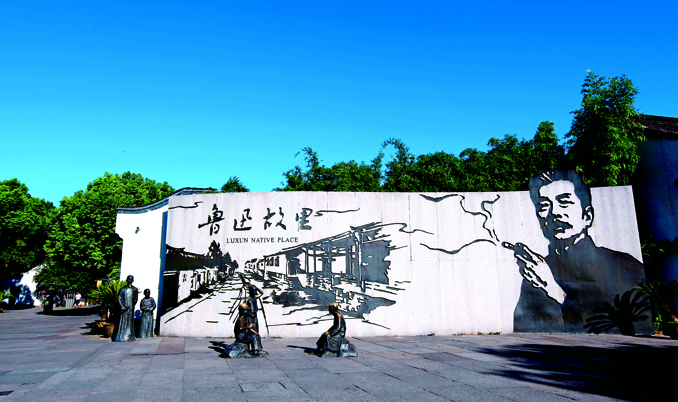 |
Hometown of Lu Xun |
Lu Xun, a great master of Chinese modern literature, was born and raised in Shaoxing. Many of his works show the distinctive local culture and his love for his homeland, from the Baicao Yuan (Hundred Plant Garden) to the Sanwei Shuwu (Three Tastes Study, which refers to history, poetry, and philosophy), from anise beans of Kong Yiji to Village Opera in the county. Traveling in Shaoxing, you can experience the Lu Xun Culture. Standing on the riverbank, you can see boatmen wearing little felt hats and boys with silver collars. Entering the Xianheng Restaurant, you can try some real anise beans; stepping into villages, you would enjoy the traditional theatrical performance.
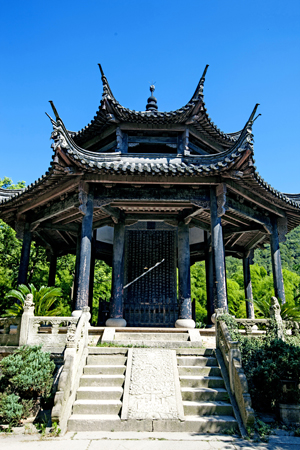 |
Orchid Pavilion, with the poem by Wang Xizhi inscribed on the stone tablet displayed |
Shaoxing is a typical water city with distinctive features. 0ver 4000 bridges lie over the ancient track roads while numerous boats traverse clear waters. The arches of bridges and their reflections in the emerald East Lake form numerous circles. The Wuxie waterfall cascades down five giant steps and flows down from the precipice. Its name also means "Five waterfalls".
The rockscape in Keyan Scenic Area is a masterpiece of nature. The Orchid Pavilion has been regarded as a Mecca for calligraphers. It is famous for the Lantingji Xu (Preface to the Poems Collected from the Orchid Pavilion), which is considered the “Best Cursive Calligraphy Work in China”. The original copy was kept in secrecy in Yunmen Temple for hundreds of years. Emperor Taizong of the Tang Dynasty liked Wang Xizhi’s calligraphy so much that he ordered a search for the original copy of Langtingji Xu.
Shaoxing is also home to Shen’s Garden, the private garden of a wealthy businessman in the Southern Song Dynasty (1127-1279 AD). Now it is a tourist attraction famous for the tragic love story about Lu You and his cousin Tang Wan.
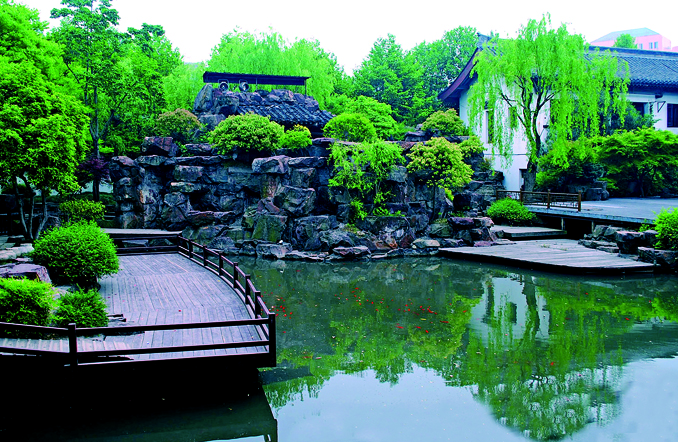 |
Shenyuan Garden |
In addition, the ancient Track Roads of the Tang Dynasty (618–907 AD), the Six Emperors Mausoleums of the Southern Song Dynasty, the old bridges of the Ming and Qing Dynasties (1368–1912 AD), as well as the distinctive folk culture typified by the Wupeng boat, the black felt hat and Meigan Cai (dried vegetable) all contribute making Shaoxing an extremely popular tourist destination.
You may also like: